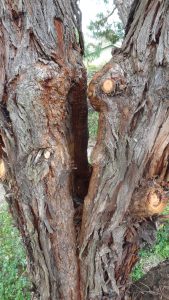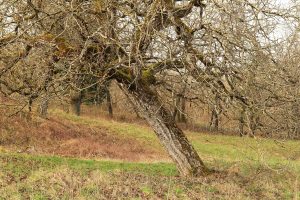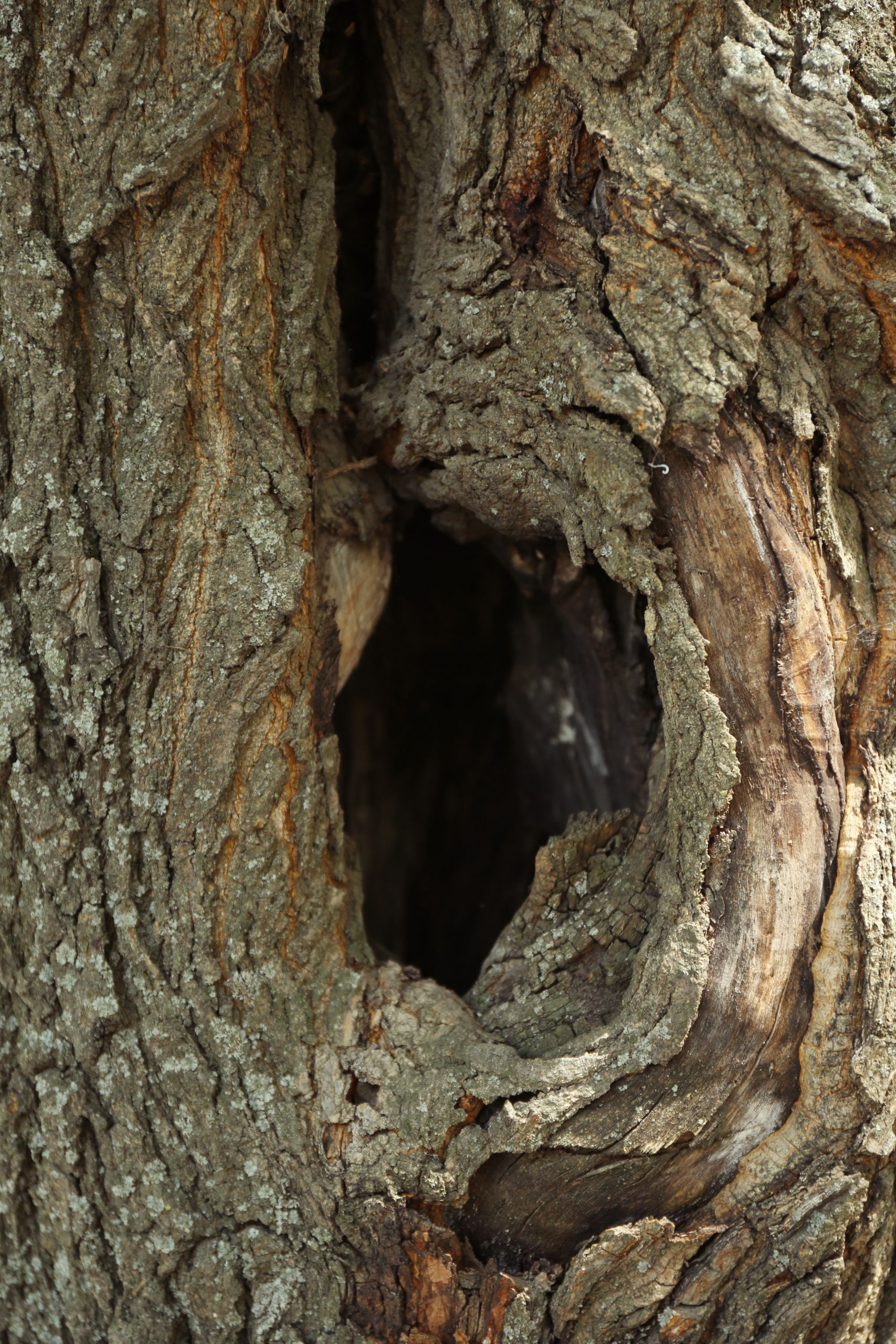Three years of drought followed by two years of heavy rain and heading back into a dry period has had a significant impact on Canberra’s trees. It’s easy to overlook them as part of the scenery—but trees can pose serious risks when they’re damaged, diseased, or structurally unsound. A failing tree can drop heavy branches without warning or can fall, damaging property and putting lives at risk.
The good news? Trees usually tell you when something’s wrong. You just have to know what to look for.
Here are the key signs of a dangerous tree:
Dead or Hanging Branches
What it looks like: Dry, brittle limbs with no leaves in spring or summer, or branches that have broken but are still caught up in the canopy.
These are called “widow-makers” for a reason. Dead branches are unstable and can fall at any time, especially in wind or storms.
Cracks or Splits in the Trunk
What it looks like: Visible cracks running along the bark, especially near branch attachments or where the trunk forks.
Cracks weaken the tree’s structural integrity. If a large split is present, it may be a sign that the tree is already starting to fail.
Leaning Tree
What it looks like: The tree is tilted more than 15 degrees from vertical, especially if this is a new development.
Some trees naturally lean—but if a tree suddenly starts leaning or the soil around the base looks disturbed or cracked, it could be on the verge of falling.
Mushrooms or Fungi at the Base
What it looks like: Clusters of mushrooms, conks, or shelf-like fungi growing around the roots or trunk base.
Fungal growth is a sign of internal rot. By the time you see mushrooms, the decay may already be compromising the tree’s core.
Peeling Bark or Hollow Spots
What it looks like: Large patches of bark missing, or a dull, empty sound when you tap the trunk.
Peeling bark on trees that don’t naturally lose their bark can indicate disease or decay beneath the surface. A hollow trunk doesn’t always mean the tree will fall, but it definitely calls for professional inspection.
Root Damage
What it looks like: Uplifted soil, exposed roots, or signs of recent construction or trenching near the base.
Roots are the tree’s anchor. When they’re cut, compacted, or rotting, the tree may not be able to hold itself up—even if the top looks healthy.
Sudden Loss of Leaves (Out of Season)
What it looks like: A normally leafy tree suddenly drops most or all of its foliage in the middle of the growing season.
Premature leaf drop is a stress response, often triggered by disease, drought, or severe root problems.
What to Do if You Notice These Signs
If you’ve spotted any of these warning signs on your property, don’t ignore them. Not all tree problems mean immediate removal—but they do mean it’s time for a professional assessment.
A TreeWorks arborist can identify whether a tree is hazardous, salvageable, or needs urgent removal—and they’ll do it safely.
Remember: Regular tree checks can prevent major damage before it happens. Take a walk around your yard this weekend—you might be surprised what your trees are telling you.



